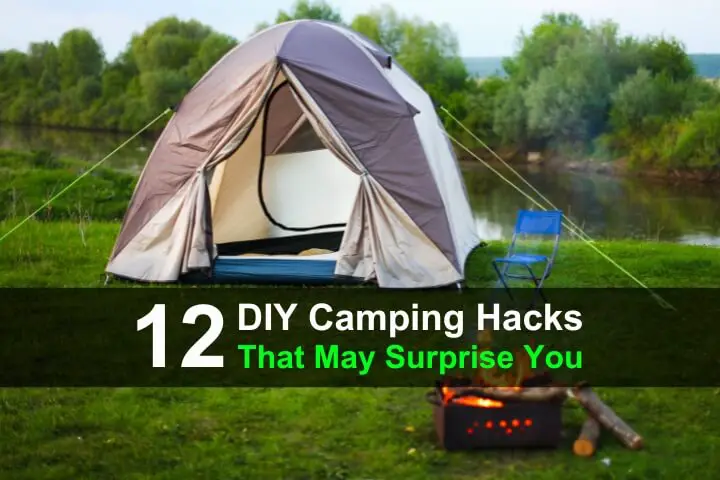(Psst: The FTC wants me to remind you that this website contains affiliate links. That means if you make a purchase from a link you click on, I might receive a small commission. This does not increase the price you’ll pay for that item nor does it decrease the awesomeness of the item. ~ Daisy)
This is an excerpt from my book, How to Prep When You’re Broke. It contains dozens of thrifty ideas for getting prepared, even when the budget seems too tight to make it happen.
I live for lists.
If I didn’t have a list-making obsession, I have no idea how I would’ve gotten through being a single mom with two busy kids, both with different extracurricular activities, all while holding down a full-time job and managing my home. Wow, I’m tired just typing that.
Prepping isn’t very different in its varied pieces, however. It’s impossible to keep all this stuff in your head. List-keeping is essential.
I like to have running lists of things like:
- Food items for the stockpile
- Hygiene and household supplies
- Pet supplies
- Power outage supplies
- Larger preps to grab if I see them on sale or secondhand
As well, I keep an inventory of the things I have on hand, but we’ll get to that in a little while.
I like to use graph paper for my lists with those nice little squares. Then I can check things off and keep all my lines nice and neat. It’s not necessary, but it makes my strange brain happy.
In this chapter, I wanted to provide you with a few lists you can use to get started with your own listmaking. Now, my family’s likes and needs may not be the same as your family’s, so this is just an example of the kinds of lists I use. Use these as inspiration and make your own lists.
The 2-week food supply
I think the best way to start without getting overwhelmed is with a simple, two-week food supply. Below, you can find a list for if you don’t have a way to cook during a power outage and a list for if you do have a way to heat things up and boil water.
Each list is per person, so multiply it by the number of people in your house. Customize it with foods your family enjoys. If you have folks with big appetites, take it into consideration with your quantities. If some of your family members are small children, you may not need the quantities listed per person.
Remember, these are just a starting point.
2-Week No-Cook Food List
What if the power goes out and you have no way to cook? The following list will keep you nourished and keep your tummies full, although it may not be the absolute healthiest way to eat.
- 14 gallons of potable water
- 24 ounces of powdered milk or shelf-stable non-dairy milk
- 2 boxes of breakfast cereal
- Raisins
- 24-pack of juice boxes
- 3 boxes of crackers
- 2 small jar of peanut butter/other nut butter/sunflower butter
- 12-pack of V-8 or other vegetable juice
- 12-pack of fruit cups
- 12-pack of applesauce
- 12-pack of pudding
- 6 cans of peas and carrots (they’re not too bad eaten at room temp)
- 6 cans of corn
- 6 cans of vegetarian baked beans
- 6 cans of Vienna sausages
- 2 packs of beef jerky
- 6 cans of tuna
- 6 cans of chicken
- Shelf-stable travel pouches of mayo
- 10 pouches of precooked rice and/or quinoa
- 4 cans of refried beans
- 1 bottle of taco sauce
- 1 package of soft tortillas
- 1 box of granola bars
Optional: Snack foods like chips, cookies, nuts, trail mix, and dried fruit
2-Week Can Cook List
This food list* assumes that you have a way to at least boil water or heat things up. Because of this, the variety is more extensive, and the choices are a bit healthier. The overall health of the menu depends on the quality of the options you choose.
- 14 gallons of water
- Variety box of instant oatmeal
- Box of cereal
- 24 ounces of powdered milk or shelf-stable non-dairy milk
- Raisins
- 12-pack of juice boxes
- 3 boxes of crackers
- 1 small jar of peanut butter/other nut butter/sunflower butter
- 6 cans of vegetable soup
- 2 cans of chili
- 8 pouches of pre-cooked rice and/or quinoa
- 7 cans of beans (pinto, white, kidney, garbanzo)
- 2 boxes of stuffing mix
- 1 bag of dried cranberries
- 4 cans of chicken breast
- Shelf-stable travel pouches of mayo
- Instant udon noodle bowls (Annie Chun brand is fairly healthy)
- 7 cans of vegetables
- 7 cans of fruit
- 4 boxes of macaroni and cheese
- 4 cans of pasta (ravioli, spaghetti, etc.)
- 2 cans of refried beans
- 1 bottle of taco sauce
- 1 package of soft tortillas
- 1 box of granola bars
Optional: Snack foods like chips, cookies, nuts, trail mix, and dried fruit
In later chapters, we’ll talk about the standard prepper food supplies you should have on hand, and what you can do with those supplies.
Now, let’s move on to other lists.
Hygiene and household supplies
I group a lot of things into this category – I suppose it could also be called “non-food” supplies. These things aren’t emergency supplies for a disaster, though many could do double duty. These are the items you should keep on hand for everyday use. If you buy them on sale or in quantity, you can put them back and use them until you find more on sale in the future. This can save you big money in the long run. I try to add at least one thing to this stockpile each week when I shop.
Here’s my list:
- Baby wipes
- Band-Aids
- Batteries
- Blankets
- Bleach
- Calamine lotion
- Candles
- Canning jars, lids, and rings
- Cleaning supplies
- Clothespins
- Coconut oil
- Cosmetics
- Cotton balls
- Cotton swabs
- Dental floss
- Deodorant
- Diatomaceous earth
- Dish soap
- Disposable cutlery
- Disposable razors
- Duct tape
- Essential oils
- Extra parts for your water filter
- Feminine hygiene items
- Flashlights
- Garbage bags
- Garden tools
- Hair elastics
- Hand sanitizer
- Heirloom seeds
- Insect repellant
- Kitty litter
- Knife sharpener
- Laundry products
- Lighters
- Lip balm
- Long-burning candles and tea lights
- Lotion and moisturizer
- Lye
- Matches
- Mouse and rat traps
- Nail clippers and emery boards
- Nails and screws
- Office supplies
- Paper
- Paper plates
- Paper towels
- Pencils
- Pens
- Peroxide
- Pet food
- Razors and blades
- Rubbing alcohol
- Safety pins
- Scissors
- Sewing/mending supplies
- Shampoo and Conditioner
- Shower gel
- Soap
- Socks
- Spare parts for important equipment like canners or tools
- Spiral-bound notebooks
- Sunscreen
- Tin foil
- Toilet paper
- Toothbrushes
- Toothpaste
- Vaseline
- Vitamins
- White vinegar
- Zip-lock bags in a variety of sizes
- Zip-ties
Your list may look very different. Maybe you don’t wear makeup – scratch cosmetics. Perhaps you have a baby – add diapers and butt cream.
The best way to figure out what you need is to write down every single consumable thing that you use in a day. Morning coffee? Write down filters on your non-food list and coffee on your food list. Shower? Write down shower gel, body pouf, shampoo, conditioner, and razor. Crafts with the kids? Write down glue, construction paper, and colors. You get the idea.
You may not need to stock up on every single thing you use in a day, and you may decide NOT to stock up on certain things because if times are tough, you’ll phase them out. But I can tell you for a fact that having extra basics can make hard times feel a whole lot easier. When I got laid off from work one year, I could use my entire unemployment check to cover my mortgage and utilities. We had all the day-to-day items we normally used on hand in quantity, so the girls never even noticed that there was a financial change afoot. We went months only grabbing a few fresh items at the store each week and living from our stockpiles.
And that is what the prepping for personal emergencies is all about: maintaining normalcy.
Pet supplies
You don’t want to forget about your beloved pets during an emergency. Here are some ideas for things you may need to keep on hand. Shoot for a supply that will last two weeks to one month and then build on that.
Food and supplies
- ½ gallon to one gallon of water per day
- Dry or canned food
- Pee pads for dogs (in case it’s a situation in which pets can’t safely go outdoors)
- Poop bags
- Medications
- Kitty litter
- Kennels or carriers
- Leashes
- Muzzles – even friendly dogs can bite when they’re scared
- Flea and tick preventatives
- Favorite toys or comfort items – pets get stressed too
Pet paperwork
- Veterinary records in case they have to go to a kennel during an evacuation
- City registration/license paperwork
- Photos of your pets
- Microchip information
Emergency prepping list
When you evolve from preparing for everything things like money problems to getting ready for a power outage or other emergency, you’ve officially graduated to “prepper” status.
As I mentioned before, it’s easy to get overwhelmed. That’s why I recommend starting off small – with supplies that will last you for two weeks during a blackout.
This list is only basic supplies. Later we’ll talk about more specifics, such as prepping for hot-weather power outages (like during a hurricane) and cold-weather outages (like during a blizzard). Here’s the list of basics I personally keep on hand.
2-Week Power Outage Checklist
This is in addition to your 2-week supply of shelf-stable food. You may not need every item (for example, you don’t need every single cooking method as long as you have one or two that are reliable during different situations.
Water
- Fill every empty container in your house
- Get some filled 1-gallon jugs at the grocery store
- Travel water filter.
- Stackable water containers
- A good quality gravity-fed water filter
- A manual pump for your well
Cooking
- Rocket stoves
- Indoor emergency stove, a chafing buffet dish, fondue pot
- Outdoor barbecue or firepit
- Fireplace or woodstove
- Propane camping stove
- Don’t forget the extra fuel!
Heat
- Fireplace or woodstove (and extra firewood)
- Set up one room to close off and insulate if the power goes out.
- Invest in a Mr. Buddy propane heater
- Battery-operated carbon monoxide alarm for safety
Light
- Garden stake solar lights
- Long-burning candles and tealights
- Matches or lighters
- Flashlights (Don’t forget batteries!)
- Inexpensive headlamps for hands-free lighting
- Kerosene lamps and fuel
This isn’t comprehensive, of course, but if you have these things, you’ll be far ahead of those who have not prepared.
Sounds expensive? Don’t panic!
You may be looking at this and thinking, “Holy crow, Daisy! I bought this book because I’m b-r-o-k-e-BROKE and you’re giving me huge lists of things to buy!”
Please don’t let these lists overwhelm you. These are wish lists and things you’ll acquire as time goes on and as you can afford it. We’ve already freed up a little bit of money in our budget and perhaps sold a few things to make prepping possible. The rest of it is just stuff to add as you can.
Plus, in the next chapter, we’ll talk about the prepping supplies you already have. Yes, YOU! Even if you haven’t started prepping yet!
Where to learn more
Please check out my book if you find yourself in a situation where the spirit is willing, but the budget is weak. It’s available on Amazon in both Kindle and paperback. Here’s the link: https://amzn.to/4dLfGkx
I have truly been there. My advice is based on real-life experience. It’s not theoretical. You really can get better prepared with very little money, if you find yourself in that position. Of course, having all the bells and whistles is great – but it’s not in the cards for all of us, particularly in our current economy.
What are some lists you find essential for preparedness? What are your best prepping-on-a-tight-budget tips? Share them in the comments section.

















